Dealing with a septic alarm can be a stressful and inconvenient experience for any homeowner. When that alarm starts blaring, it’s an indication that something might be amiss with your septic system, requiring prompt attention.
However, knowing how to turn off a septic alarm is a crucial skill for homeowners to have in their toolkits. In this informative guide, we will explore the essential steps on how to turn off septic alarm.
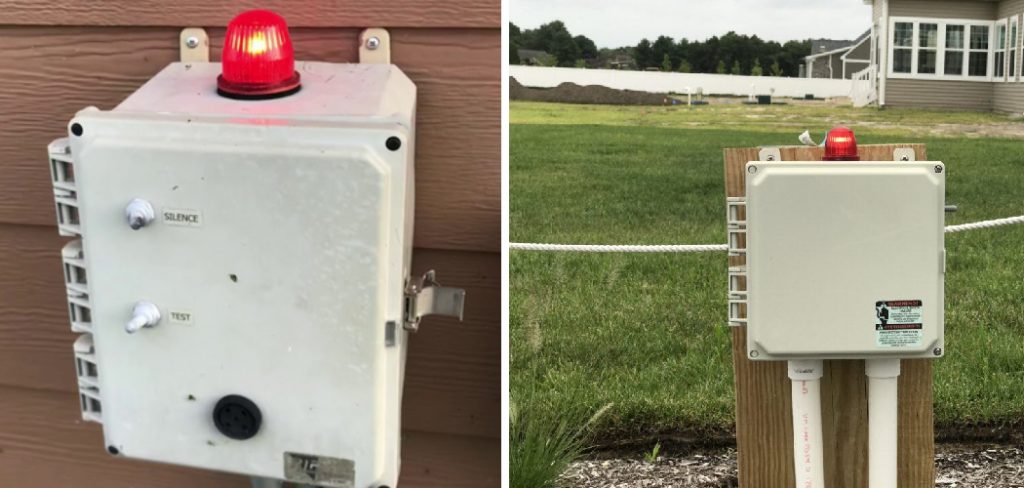
Whether you’re facing a minor issue or a more significant septic system problem, understanding how to deal with the alarm can help you avoid potential health hazards, property damage, and costly repairs. So, let’s delve into the process of safely and effectively silencing that pesky septic alarm and ensuring the well-being of your septic system and home.
Motives for the Necessity to Silence a Septic Alarm
When the alarm of a septic system is ringing, it can be incredibly disruptive and annoying. But if you don’t take any immediate action to silence the system, more serious problems could arise.
For instance, if a malfunction has caused the alarm to go off, it could indicate that your tank is full or that there’s an issue with the system. Therefore, if you’re hearing a septic alarm, it’s important to quickly take steps to shut off the sound and address any underlying issue with your system.
The Importance of Safety when Dealing with Septic Systems
Whenever you are dealing with any type of septic system, safety should always be your number one priority. It is important to remember that sewage can contain harmful bacteria and viruses, so it is essential to take the necessary precautions when dealing with it.
For instance, wearing protective clothing such as gloves and face masks will help protect you from coming in contact with potentially hazardous substances.
Septic systems can also create a variety of alarms when they become overloaded or malfunctioning. It is important to learn how to turn off these alarms in order to avoid further damage to the system and personnel safety. In this article, we will discuss some tips on how to turn off a septic alarm and ensure your personal safety throughout the process.
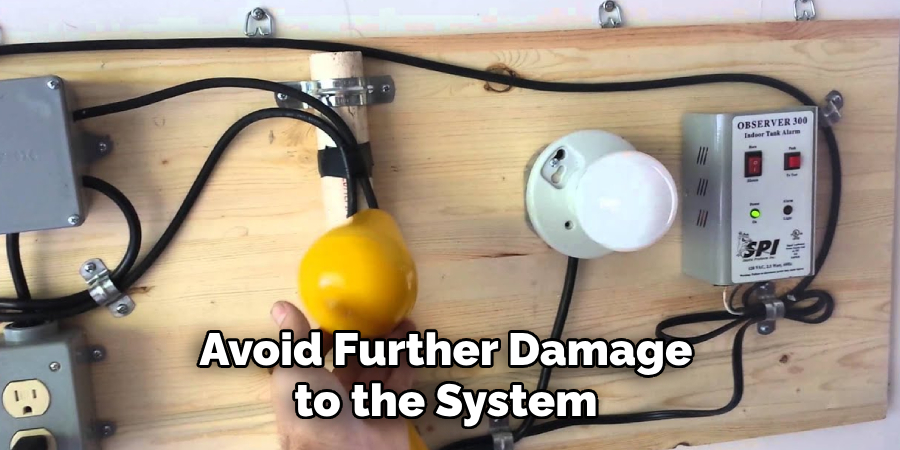
Identifying Potential Risks and Hazards
If you are dealing with a septic system alarm, it is important to identify potential risks and hazards. Depending on the type of alarm, there can be electrical hazards or health risks associated with exposure to wastewater.
It is essential to make sure that all safety precautions have been taken before attempting to turn off the alarm. Make sure that the area is well ventilated and that any power sources are turned off. Once all potential risks have been identified, you can move on to the steps of turning off your septic system alarm.
10 Steps How to Turn off Septic Alarm
Step 1: Identify the Alarm’s Location
Commence your journey by identifying the precise location of the septic alarm. Typically situated near the septic tank or within the control panel of your septic system, these alarms are usually equipped with visual lights, audible alarms, or a combination of both.
Step 2: Diagnose the Underlying Cause
Before embarking on the journey of silencing the septic alarm, strive to identify the root cause triggering the alert. The alarm may activate due to a myriad of issues, including a saturated septic tank, a malfunctioning pump, or a compromised drainage field. Discerning the cause enables you to formulate an appropriate plan of action.
Step 3: Prioritize Safety
Prioritize safety before proceeding with any action. Ensure the power to the septic system is disabled to mitigate potential electrical hazards. This can be achieved by identifying the circuit breaker or disconnect switch governing the septic system and turning it off.
Step 4: Locate the Reset Mechanism
In many septic systems, a reset button is present to temporarily silence the alarm. This button can typically be found either on the alarm itself or within the control panel. For guidance on locating the reset button specific to your system, consult the user manual or the manufacturer’s instructions.
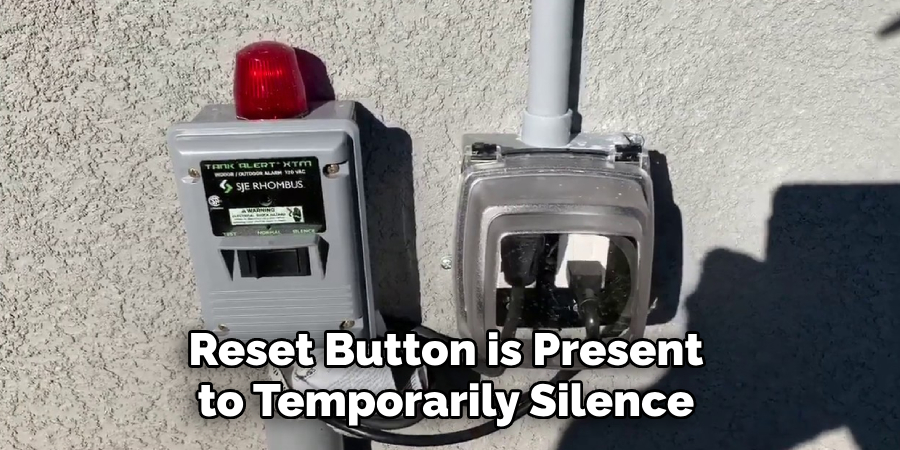
Step 5: Silence the Alarm Temporarily
Press the reset button to silence the septic alarm temporarily. This action effectively halts the audible alert, offering you respite from the disconcerting sound. Nevertheless, bear in mind that silencing the alarm does not resolve the underlying issue with your septic system.
Step 6: Examine the Septic Tank
Following the temporary silencing of the alarm, inspect the septic tank to assess its water level. If the tank is brimming or approaching capacity, it is imperative to arrange for professional septic tank pumping. Contact a reputable septic service provider to schedule this crucial maintenance task.
Step 7: Inspect the Pump
Should the water level within the septic tank not be the issue, proceed to examine the septic pump. Ascertain that it is operating smoothly and without obstructions or blockages within the pump or discharge line. If any pump malfunction is detected, promptly initiate the repair or replacement process.
Step 8: Evaluate the Drainage Field
Septic alarms may also be triggered by problems in the drain or drainage field. Inspect the area surrounding the drain field for signs of sewage backups or standing water. Any indications of drain field issues should prompt immediate consultation with a septic professional for a comprehensive inspection and, if necessary, repairs.
Step 9: Address Potential Plumbing Problems
Occasionally, plumbing issues within your property, such as a blocked sewer line or excessive water usage, may activate the septic alarm. If plumbing concerns are suspected, engage a licensed plumber to diagnose and rectify these issues promptly.
Step 10: Schedule Professional Servicing
While these steps aid in temporarily silencing the septic alarm and addressing common issues, it is paramount to schedule regular professional maintenance and inspections for your septic system. This proactive approach not only prevents future problems but also ensures the long-term health and functionality of your septic system.
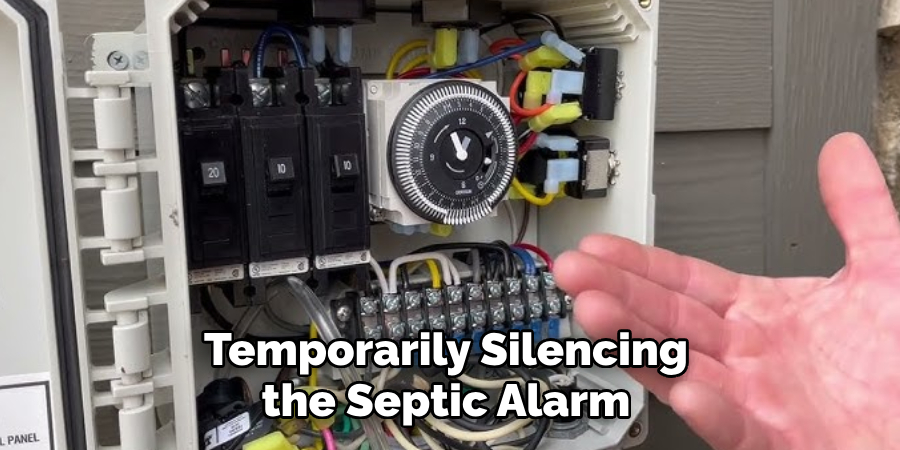
Things to Consider When Turning off Septic Alarm
When attempting to turn off a septic alarm, it is important to consider the following safety tips:
- Wear protective clothing such as gloves and face masks when dealing with septic systems.
- Make sure that all power sources are turned off before attempting to turn off the alarm.
- Identify the root cause of the alarm before attempting to turn it off.
- Contact a licensed plumber or septic professional if you are unable to identify the root cause or rectify the issue.
- Schedule regular maintenance and inspections of your septic system to ensure its health and proper functioning.
By following these safety tips, you can be sure that the process of turning off a septic alarm will be done efficiently and effectively. With proper maintenance and care, you can ensure that your septic system operates without any issues for many years to come.
Some Common Mistakes to Avoid When Turning off Septic Alarm
When it comes to turning off a septic alarm, there are some common mistakes that you should be aware of in order to avoid any potential damage. Here are some steps you can take to make sure that the process goes smoothly and without incident:
- If your septic system has an emergency shut-off valve, it is important to use only that valve to turn off your septic alarm. Do not attempt to use the regular shut-off valve; this could end up damaging the system or causing further issues in the future.
- Make sure you are aware of any potential electrical hazards associated with turning off a septic alarm, such as exposed wires or live currents. Take necessary precautions before attempting to shut the system off.
- If you are not familiar with the process of turning off a septic alarm, it is important to consult an expert before proceeding. Attempting to do it yourself without proper knowledge could result in costly repairs or even danger to yourself and others.
- Finally, always make sure you follow all instructions provided by your septic system manufacturer regarding turning off the alarm. This is the only way to ensure that you are doing it correctly and safely.
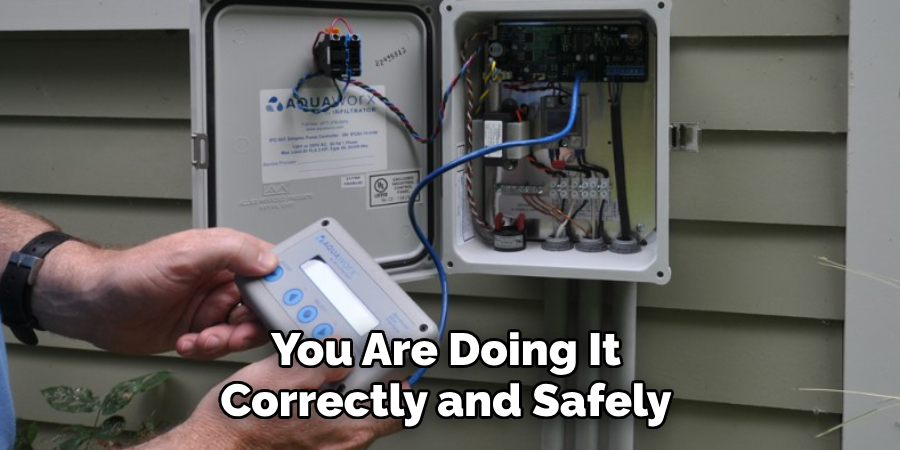
By taking these steps, you can rest assured that your septic system will remain in good condition and operate as intended. Additionally, it will help keep your family safe from any potential hazard associated with a malfunctioning septic alarm.
Conclusion
Although the problem of your septic alarm may seem daunting, always remember that safety is the number one priority. That being said, following the steps outlined in this blog post can help you turn off your septic alarm quickly and easily. If the steps do not succeed, it’s important to call a professional rather than try to troubleshoot it by yourself.
Better safe than sorry, right? Additionally, make sure to have regular maintenance checkups on your septic system in order to keep it running smoothly for as long as possible.
By following these tips, you can ensure that you’re equipped with the knowledge of how to turn off septic alarm if need be! Taking your time and having patience when managing this process is key – but with a bit of finesse and a thorough understanding of each step presented here, you can finally rest easy knowing that this problem has been solved.
About
Safety Fic is a distinguished figure in the world of Diy design, with a decade of expertise creating innovative and sustainable Diy solutions. His professional focus lies in merging traditional craftsmanship with modern manufacturing techniques, fostering designs that are both practical and environmentally conscious. As the author of diy, Safety Fic delves into the art and science of Safety Fic-making, inspiring artisans and industry professionals alike.
Education RMIT University
(Melbourne, Australia) Associate Degree in Design (Safety Fic) Focus on sustainable design, industry-driven projects, and practical craftsmanship. Gained hands-on experience with traditional and digital manufacturing tools, such as CAD and CNC software.
Nottingham Trent University
(United Kingdom) Bachelor’s in diyfastly.com and Product Design (Honors) Specialized in product design with a focus on blending creativity with production techniques. Participated in industry projects, working with companies like John Lewis and Vitsoe to gain real-world insights.
Publications and Impact
In diy, Safety Fic his insights on indoor design processes, materials, and strategies for efficient production. His writing bridges the gap between artisan knowledge and modern industry needs, making it a must-read for both budding designers and seasoned professionals.
